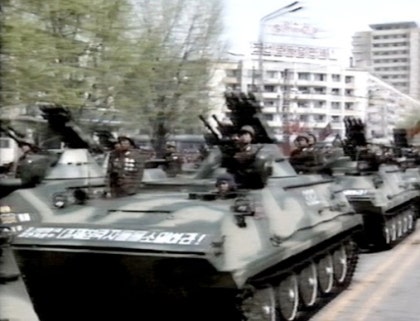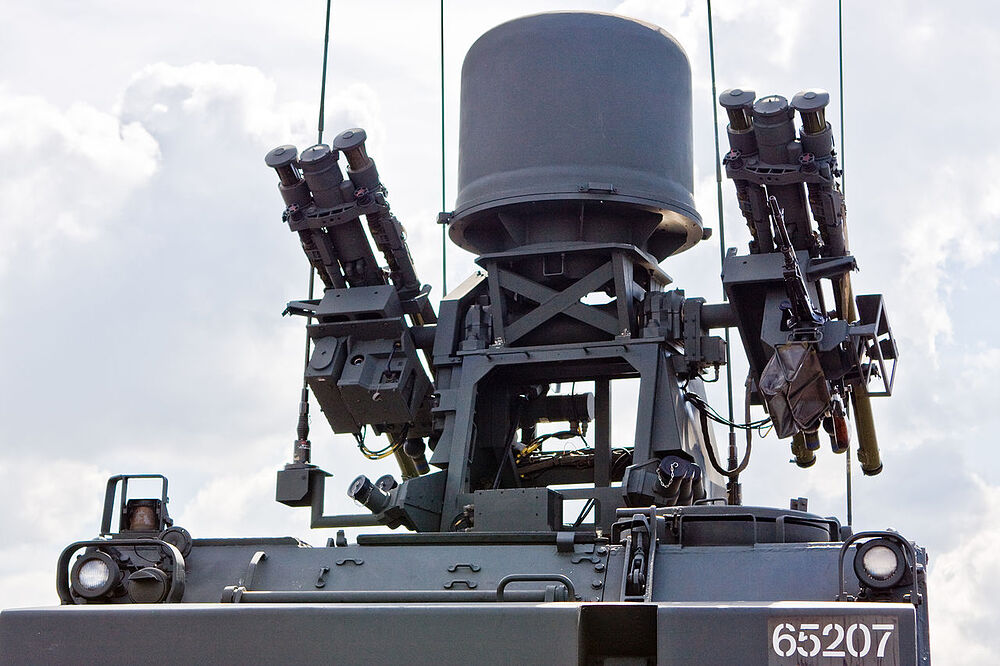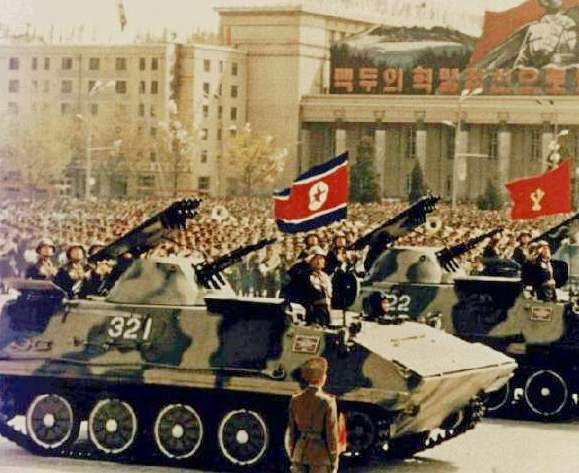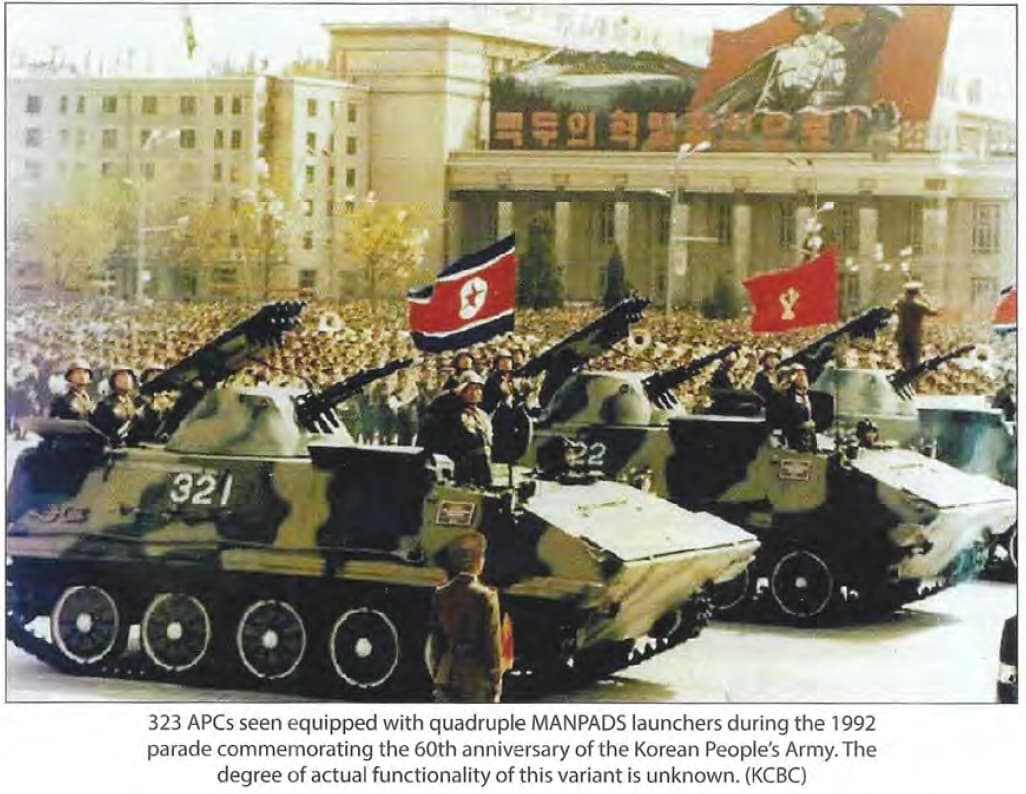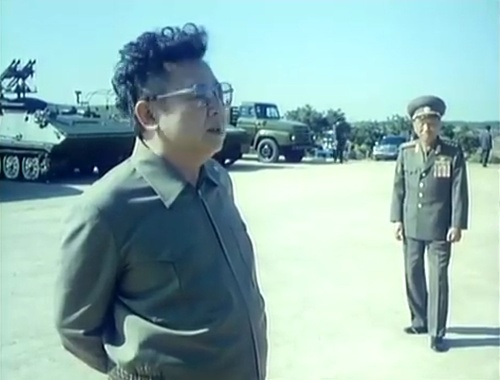- Yes
- No
- All
- 323 APC
- 323 with 8 Iglas
- 323 with 2 Iglas and a Malyutka
- I voted no for the first question
Brief Summary:
The silent workhorse of the North Korean army the 323 APC has filled a variety of roles in it’s long lifetime of service however this post will be on the main variant and it’s long lifetime in service.
History:
The 323 apc also known as the VTT-323 was originally observed in 1973 and was designated as the M1973 by the US Department of Defence. However we have to go much further back for the full history on this apc. North Korea had been a customer of Soviet and Chinese vehicles in the 1940’s and 1950’s of which it’s main apc’s of the BTR 152, 40 and 60 varieties and the later more influential design the Chinese YW 531A also known as the Type 63A. North Korea had acquired the Type 63A by 1967 which would lead to the basis upon which the 323 is based upon.
Developed by the Sinhung tank plant located in the Sinhung county of North Korea has been the main producer of light vehicles having produced PT-76’s for North Korean use during the 1960’s had most likely received plans upon the 323 design on the basis of the Type 63A with changes to suit the Korean People’s Army better than what the Type 63 was able to. The first distinct feature you will notice upon this apc compared to the Type 63’s is the turret, located at the rear of the vehicle this turret could rotate 360° and housed 2 14.5mm KPV machine guns. Because of this the hull was elongated to fit this change by 1 roadwheel.
The other main feature you will notice upon the 323 APC is that it’s amphibious with a boat shaped front of the hull and the installation of two hydrojets to give propulsion in the water. The engine is believed to be the same as the Type 63 which itself originated as the German Deutz BF8L413F which could produce 320hp. The engine would sit on the right side of the vehicle behind the Co-driver with the driver situated on the left side of the vehicles front. The driver would receive a periscopic sight for vision whilst driving. The capacity of the vehicle is 10 additional infantrymen with North Korean claims of up to 12 infantrymen which is more unlikely due to the size of the vehicle. Compared to the other APC’s of the time the hydrojets allowed the North Korean APC to be more mobile with a 10km/h maximum speed in amphibious combat compared to it’s Chinese and South Korean APC counterparts of the Type 63 and M113 which one could not be amphibious whilst the other had almost half the maximum speed in water.
The 323’s maximum speed was estimated at 80km/h on road by the US Marine Corps intelligence however as the engine most likely remains the same as the Type 63’s it’s maximum speed is more likely to be 65km/h on road whilst that same corps estimated the armour of the vehicle to be 24mm thick however again it is more likely to be the same 14mm as found on the Type 63 enough to protect the vehicle from small arms fire. The turret is similar to the BRDM-2 and BTR-60PB however it is wider than those turrets which is for fitting the 2 14.5mm machine guns instead of a singular on the other apc’s. Because of the guns being 14.5’s and the turret it is estimated to have a high elevation which it can use to engage helicopters that it would of expected to fight from the era such as the AH-1’s and UH-1’s. Because of the 14.5mm’s it was one of the more heavily armed apc’s around the time of it’s introduction and would of been a threat to other apc’s of it’s time. The maximum crew operating the vehicle is estimated between 3-4 crew members of which the fourth would be a radio operator.
For it’s time in the 1970’s this APC was a fairly respectable vehicle to it’s contemporary tracked apc’s in service of the same era and would become the most common APC in North Korea service with an estimated 2000 vehicles of the type by 2010. Since it’s introduction it has been modified into a variety of roles and improved for engaging air and ground targets with the most common modification has been the installation of eight Igla’s on the back of the turret as seen in the 1992 parade however it is unknown if they are used in exercises or are just for show in the parades and the example of the Malyutka missiles on the M1981 light tank in another parade.
Zimbabwe and Ethiopia have been apparent customers to the 323 APC however no footage of this vehicle has been captured of the APC in their service other than the 323 M1977 self propelled gun variant seen in Ethiopia service.

323 with Iglas as seen on parade in 1992

323 configuration as described by the US Marine Corps Intelligence Activity document, Source: North Korea Country Handbook, Marine Corps Intelligence Activity, 1997
Specification:
Dimensions (L-W-H): 6.476m x 2.978m x 2.58m (21’2’’ x 9’8’’ x 8’5’’ ft)
Total Weight: 12.6-15.3 tons estimated
Crew: 3-4
Propulsion: 320hp Deutz BF8L413F 8 cylinder engine, 2500rpm
Transmission: unknown
clearance: unknown
Power to Weight Ratio: 25.4-20.92hp/ton
Suspension: Torsion Bar
Top Speed: 60-65km/h (37.2-40.4 mph) on road (80km/h (49.7) in one source) 10km/h amphibious (6.2)
Main Armament: 2x 14.5mm KPV 600rpm
Vertical Guidance: unknown
Secondary Armament: Some models seen with up to 8 Iglas and some with 2 Iglas and a Malyutka (however they may not of been able to fire those)
Armour: 14mm of armour maximum (US estimated 24mm but unlikely)
Production: unknown (at least an estimate of 2000 produced)
Additional Images:






Propaganda usage of 323 in depicted US colours.
Tank Encyclopaedia depictions of the 323:




Sources:
323 APC - Tank Encyclopedia
VTT-323 | Military Wiki | Fandom
http://www.military-today.com/apc/m1973.htm
The North Korean VTT-323 Armoured Personnel Carrier
VTT-323 (M1973 Sinhung) Armored Personnel Carrier (APC)
A Visual Guide To North Korea’s Fighting Vehicles - Oryx






